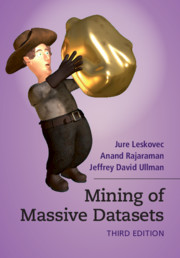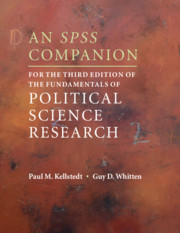Refine search
Actions for selected content:
37586 results in Cambridge Textbooks
Preface to the Spanish Version
-
- Book:
- Quantitative Genetics
- Published online:
- 06 October 2020
- Print publication:
- 23 April 2020, pp xv-xvi
-
- Chapter
- Export citation
1 - Introduction and Motivation
- from Part I - Mathematical Foundations
-
- Book:
- Mathematics for Machine Learning
- Published online:
- 20 February 2020
- Print publication:
- 23 April 2020, pp 3-7
-
- Chapter
- Export citation
Frontmatter
-
- Book:
- An SPSS Companion for the Third Edition of The Fundamentals of Political Science Research
- Published online:
- 14 April 2020
- Print publication:
- 23 April 2020, pp i-iv
-
- Chapter
- Export citation
5 - Vector Calculus
- from Part I - Mathematical Foundations
-
- Book:
- Mathematics for Machine Learning
- Published online:
- 20 February 2020
- Print publication:
- 23 April 2020, pp 120-151
-
- Chapter
- Export citation
Brief Contents
-
- Book:
- An SPSS Companion for the Third Edition of The Fundamentals of Political Science Research
- Published online:
- 14 April 2020
- Print publication:
- 23 April 2020, pp v-vi
-
- Chapter
- Export citation
9 - Linear Regression
- from Part II - Central Machine Learning Problems
-
- Book:
- Mathematics for Machine Learning
- Published online:
- 20 February 2020
- Print publication:
- 23 April 2020, pp 260-285
-
- Chapter
- Export citation

Mining of Massive Datasets
-
- Published online:
- 16 April 2020
- Print publication:
- 09 January 2020
-
- Textbook
- Export citation

An SPSS Companion for the Third Edition of The Fundamentals of Political Science Research
-
- Published online:
- 14 April 2020
- Print publication:
- 23 April 2020
-
- Textbook
- Export citation

Communication Skills for Business Professionals
-
- Published online:
- 06 April 2020
- Print publication:
- 12 June 2019
-
- Textbook
- Export citation
Preface
-
- Book:
- Learning to Research and Researching to Learn
- Published online:
- 02 May 2020
- Print publication:
- 06 April 2020, pp ix-xi
-
- Chapter
- Export citation
2 - The decision to research: what is involved?
-
- Book:
- Learning to Research and Researching to Learn
- Published online:
- 02 May 2020
- Print publication:
- 06 April 2020, pp 18-33
-
- Chapter
- Export citation
1 - Introduction to education research and practitioner research: what is it and why do it?
-
- Book:
- Learning to Research and Researching to Learn
- Published online:
- 02 May 2020
- Print publication:
- 06 April 2020, pp 1-17
-
- Chapter
- Export citation
Index
-
- Book:
- Learning to Research and Researching to Learn
- Published online:
- 02 May 2020
- Print publication:
- 06 April 2020, pp 202-208
-
- Chapter
- Export citation
Contents
-
- Book:
- Learning to Research and Researching to Learn
- Published online:
- 02 May 2020
- Print publication:
- 06 April 2020, pp v-viii
-
- Chapter
- Export citation
11 - Professionalism and practitioner research
-
- Book:
- Learning to Research and Researching to Learn
- Published online:
- 02 May 2020
- Print publication:
- 06 April 2020, pp 179-193
-
- Chapter
- Export citation
5 - From research questions to planning the research process: approaches to study design
-
- Book:
- Learning to Research and Researching to Learn
- Published online:
- 02 May 2020
- Print publication:
- 06 April 2020, pp 74-91
-
- Chapter
- Export citation
6 - Participant selection and data collection: designing and administering
-
- Book:
- Learning to Research and Researching to Learn
- Published online:
- 02 May 2020
- Print publication:
- 06 April 2020, pp 92-112
-
- Chapter
- Export citation
About the authors
-
- Book:
- Learning to Research and Researching to Learn
- Published online:
- 02 May 2020
- Print publication:
- 06 April 2020, pp xii-xii
-
- Chapter
- Export citation
7 - Organising and analysing data
-
- Book:
- Learning to Research and Researching to Learn
- Published online:
- 02 May 2020
- Print publication:
- 06 April 2020, pp 113-132
-
- Chapter
- Export citation
4 - Engagement with research: locating, reading, critiquing and reviewing literature
-
- Book:
- Learning to Research and Researching to Learn
- Published online:
- 02 May 2020
- Print publication:
- 06 April 2020, pp 53-73
-
- Chapter
- Export citation
